Words Miguel Llona, with Patrick Kasingsing
Images Open House Design
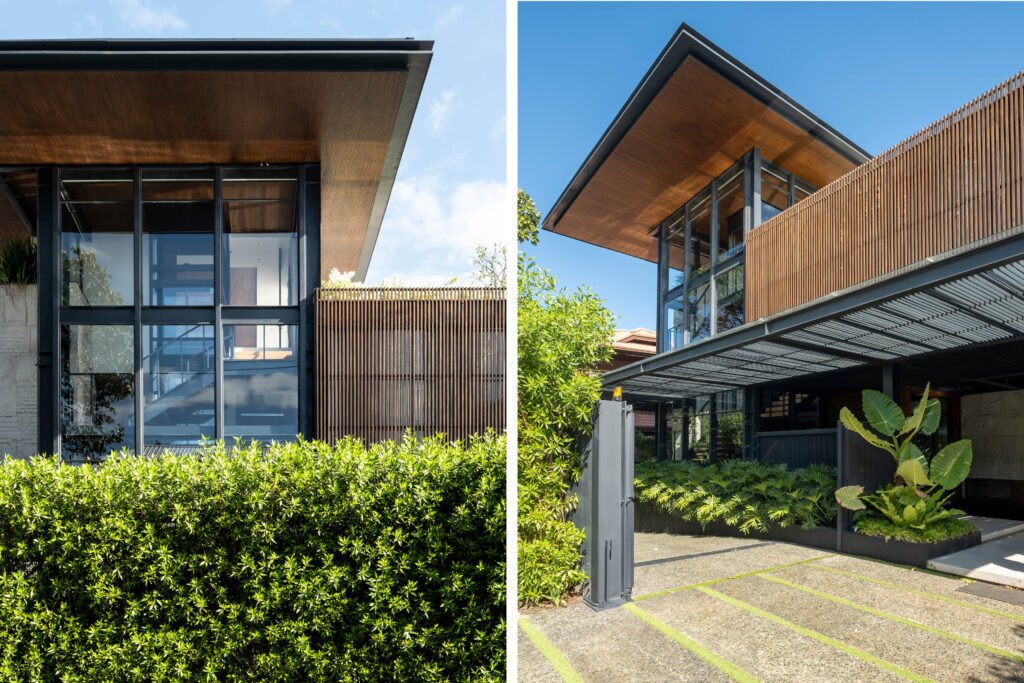

The meaning behind the name of Quito and Jacy Medina’s firm, Open House Design, is as transparent and open-ended as the term it is referencing. “It can mean a lot of things, that’s why we liked the name,” says Quito, the firm’s principal architect with wife and co-principal Jacy serving as director for interior design and styling. “It can mean starting with a blank slate, and it’s also taking into account the site, surroundings, and orientations and allowing the project’s stakeholders—the designers, the client, and the contractors involved—to help shape the house to what it is. Admittedly, I was very close-minded before in terms of design, that it has to follow a certain discipline…at a certain point, I learned that you have to let [a project] organically grow into its own.”
Having this kind of mindset is extremely useful in projects with multiple stakeholders involved, such as one of their recent ones, Vista House. The house is a build-and-sell project, and commissions of this nature are often at the mercy of profit and demand. They also tend to be bland and safe because they had to appeal to a more general set of buyers. Quito, being an alumnus of the illustrious Leandro V. Locsin Partners, had to balance his architectural sensibilities with the economic considerations of the assignment.
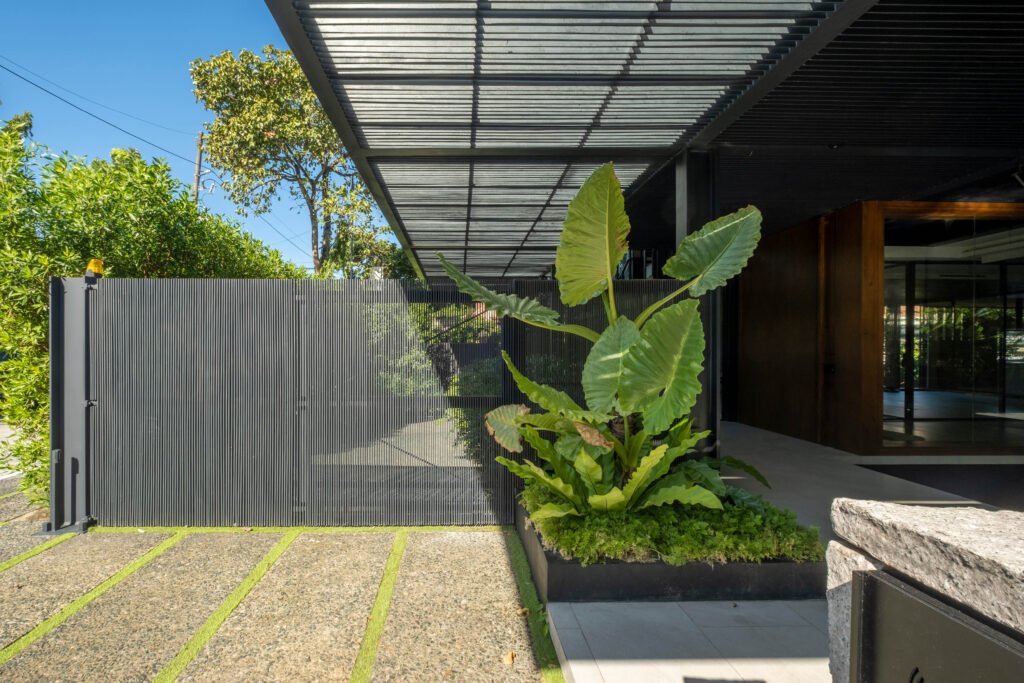

“Admittedly, I was very close-minded before in terms of design, that it has to follow a certain discipline…at a certain point, I learned that you have to let [a project] organically grow into its own.”
QUITO MEDINA
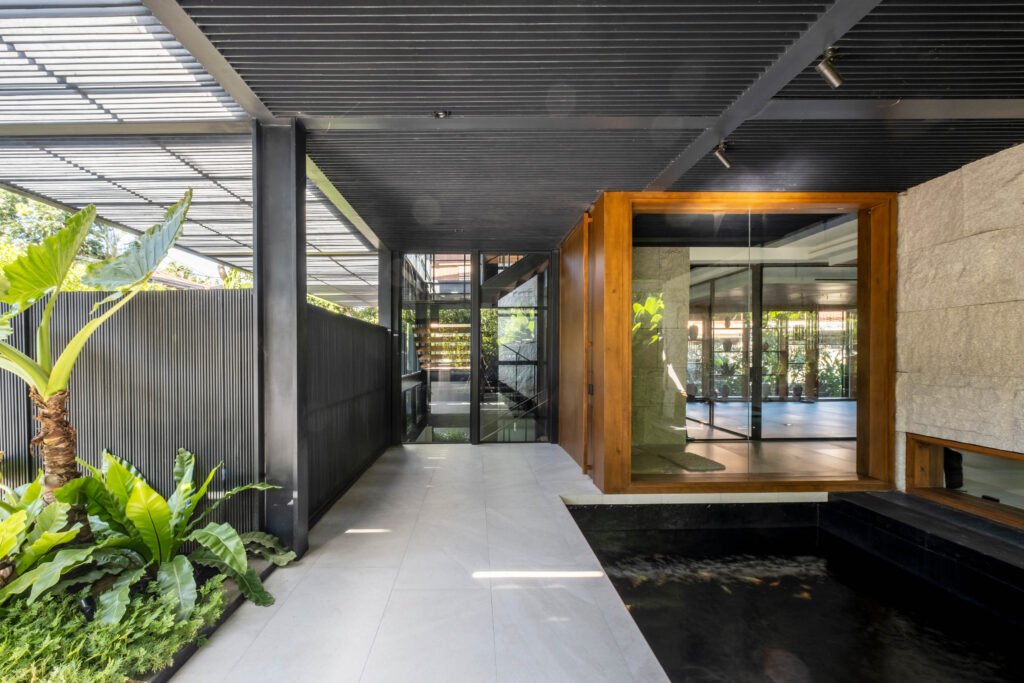

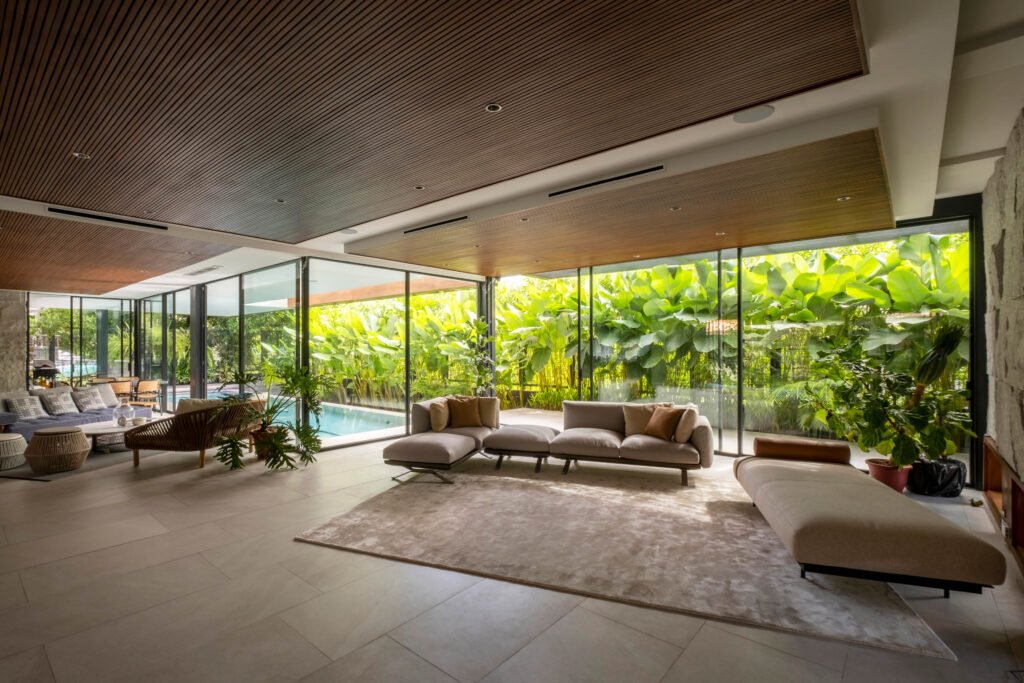

Vista House isn’t the Medinas’ first foray into build-and-sell, as they had previously renovated an old house brought by the same developer, who, fortunately, specifically sought out the firm for its approach to spatial craftsmanship. Located in one of Metro Manila’s upper-crust neighborhoods, the developer wanted the house to exude luxury and make the most of its land value. In theory, this would mean an enclosed structure with little room for open spaces and vistas in the 748 square-meter lot, but Medina and his team had a different idea of what “luxury” entails. Instead of creating the impression of luxury through the use of expensive materials, they focused their design on openness and transparency, with the lushness of nature still being a prominent sight throughout the house.
“An ideal home for us is one that welcomes you into your own private sanctuary,” says Medina. “A home that is made complete with the help of lush greenery, creating that perfect calming environment and at the same time, providing the privacy which is often overlooked. That to us is luxury. Materials and composition contribute to the design language of a home but we believe it isn’t solely what defines a space. For us, it is how you engage your surroundings and maximize the potential of its setting. That’s why people go to very secluded resorts because you can’t put a price on privacy.” With no perimeter wall or gate obscuring the frontage, save for a thicket of California bay leaf plants acting as a green screen to hide the ramp leading to the basement parking, the Vista House balances between exposing itself to the outside and keeping its interior spaces concealed enough.
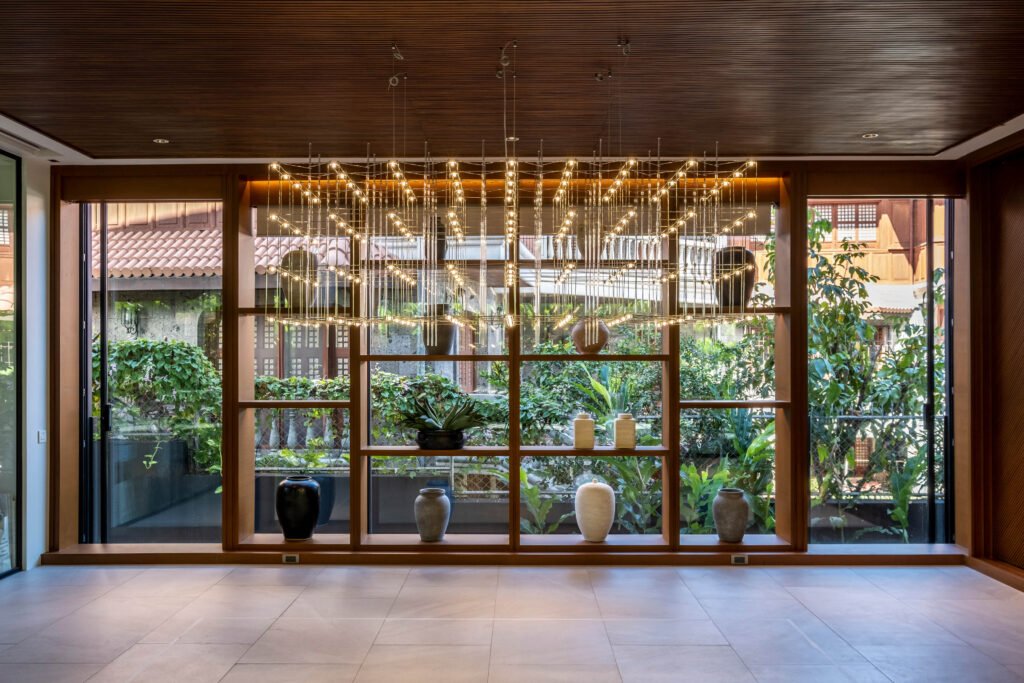



The concept of openness is apparent from the point of entry into the house alone, as the pathway leading to the front door is flanked by a koi pond and a glazed volume enclosing the staircase and lift connecting its three floors. Before one even enters the house, the palette of materials used can already be appreciated—wood for the main door, split face granite stone for the wall by the koi pond (with a slit of glass on its lower part providing a view from the interiors and vice versa), and steel columns and ceiling grills.
The latter is a pronounced presence throughout the house since one of the developer’s parameters was to build the whole structure in steel. The steel bars and columns are exposed on portions of the ground floor and the exterior, with only the wood louvers covering the volume containing the master bedroom breaking up the house’s metal composition. The façade, with the glazed staircase volume and the louvered volume containing the private rooms on its right, represents the dichotomy of the design team’s concept—the house strikes a balance between opening itself to the elements and screening its interiors from outside scrutiny. A three-meter-long eave for the roof crowns the glazed volume, lessening the amount of direct sunlight and heat that can penetrate its glass walls.




Since the project had no real “client” as a build-and-sell development, the interiors designed by IDr. Raissa Cruz were meant to be a blank canvas, which played right into the design team’s concept of openness and transparency. From the narrow foyer, which is bordered by a glass wall overlooking the koi pond to the right and a glass door leading to the stairwell on the left, the space opens up considerably in the living area where one is led to. The living area feels as airy as it is spacious, helped mostly in part by the glass partitions that frame vistas of the pool and the shrubbery planted along the eastern side of the property. The sight cools like a breath of fresh provincial air, a rarity even in the most secluded subdivisions in the city.




Carving out these vistas of greenery from the house’s volumes is a major reason why there appears to be a luxury of open spaces, despite the structure being maximized to the property’s edges. Plontur, a landscape architecture firm that works closely with architects to create landscaping complementary to the architectural design, was brought in to conceptualize the outdoor green spaces that could heighten users’ experience within the house. “For us, landscaping goes hand in hand with architecture. It’s becoming less and less about the house, but more about the built environment,” says Medina. It’s not only the appearance of the plants that factor into the calming environment within Vista House, but also the rustling of their leaves as the wind moves them, particularly from the bamboo planted on the western perimeter to screen the house from the neighbors.
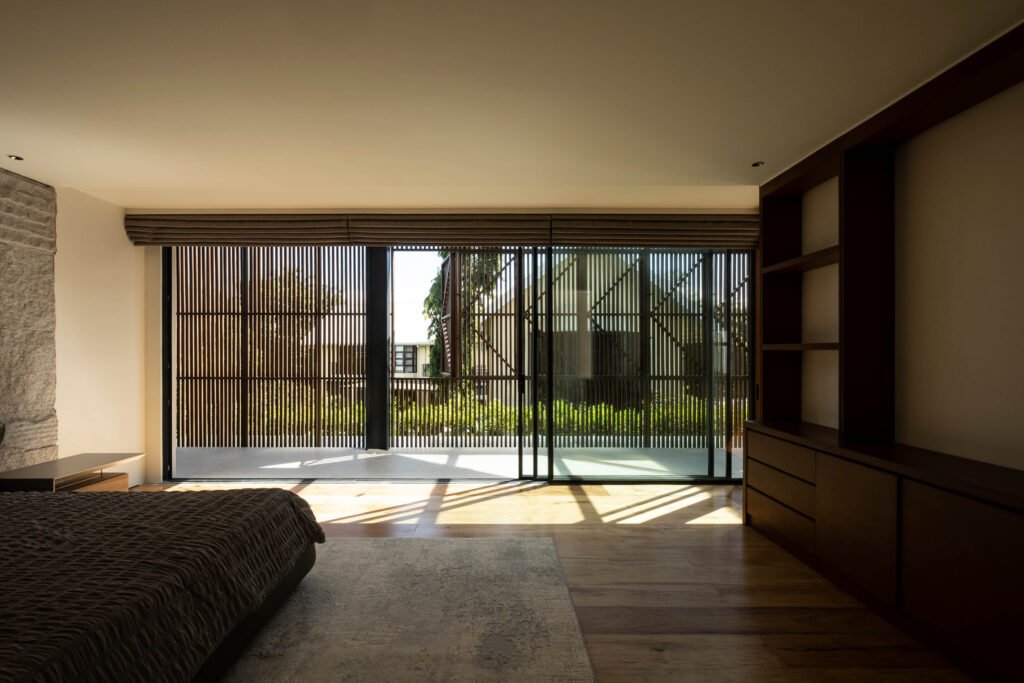

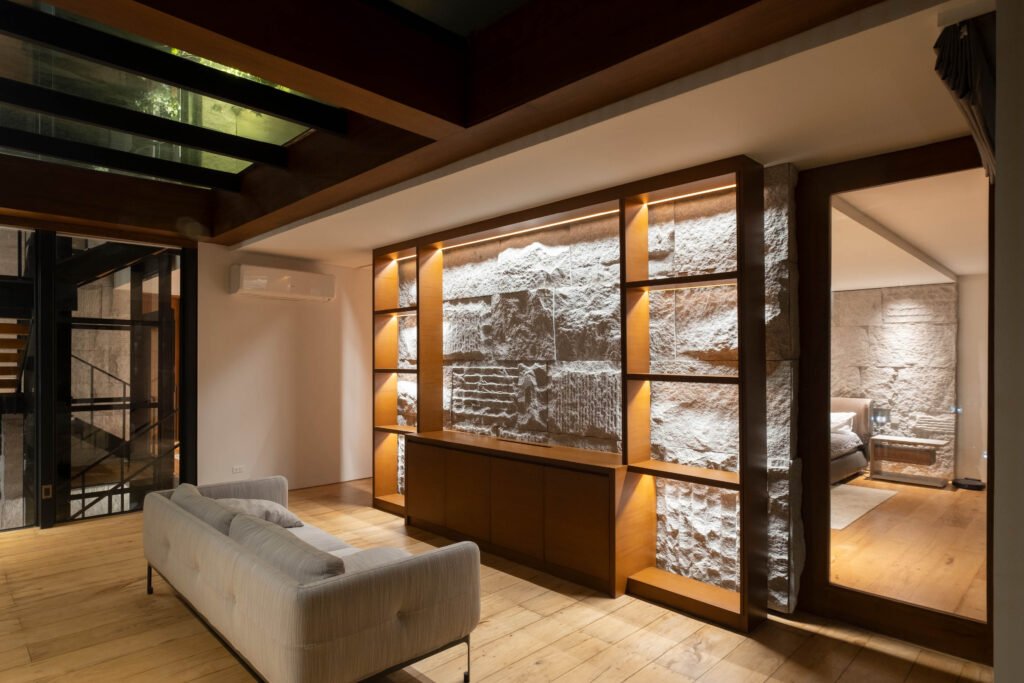
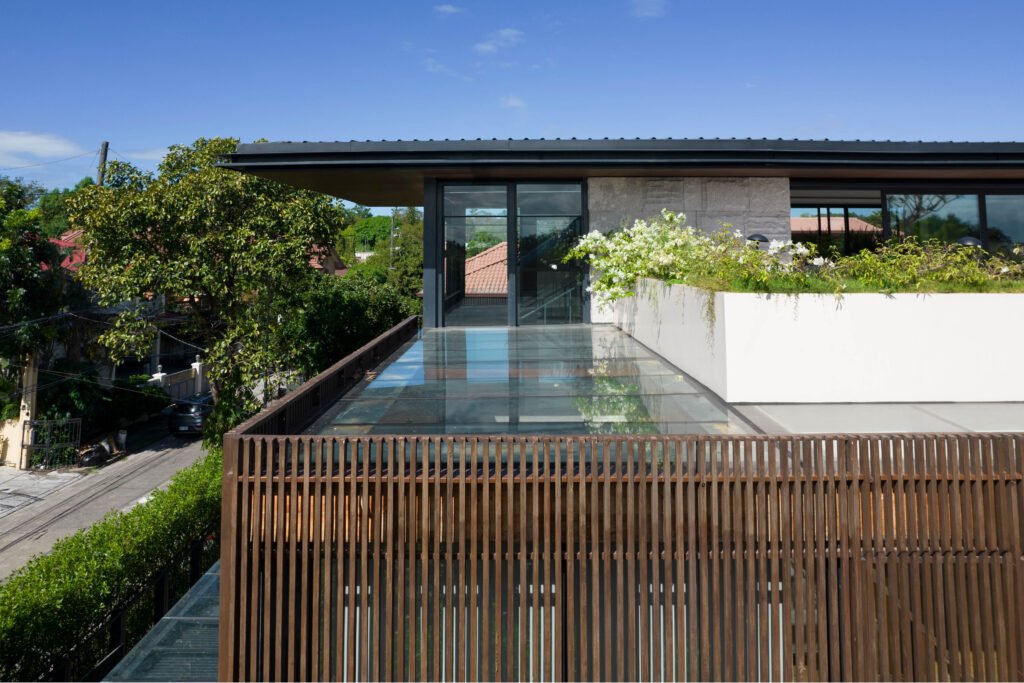
There are four bedrooms on the second floor, with a small family area on the landing adjacent to the master bedroom. The master bedroom is allotted the largest space in the house, with equally large spaces for the walk-in closet and bathroom. To the east is another floor-to-ceiling glass partition that would’ve provided an uninterrupted view of the room for the neighbors next door, if it weren’t for the louvers acting as both brise soleil and a security screen. Just beyond this glass wall—which are really operable sliding windows—is a narrow pathway that runs along the eastern wall of the house, connecting the bedrooms on the second floor and wrapping around the front to serve as a balcony for the master bedroom.
That was supposed to be the original plan, were it not for the developer requesting that the master bedroom be expanded to include a lounge in order to increase its value for potential buyers. In the original design, the volume containing the master bedroom was supposed to terminate and align with the stone wall of the volume containing the staircase, and the expansion meant a lack of structural support for a solid roof, leading to a glass roof to cover the space. The expansion also meant that the pathway along the eastern wall couldn’t wrap around to the front, with the space converted into an interior area that is in danger of heating up due to the newly created skylight.
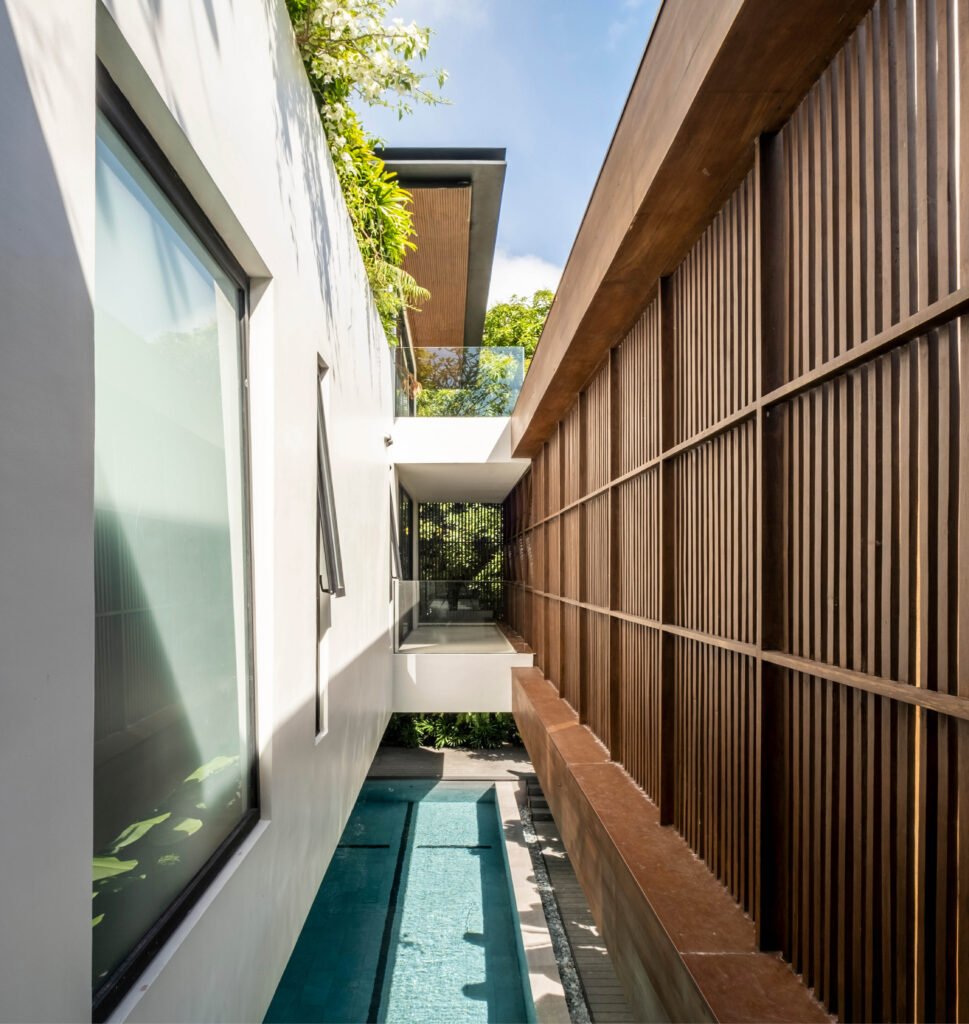
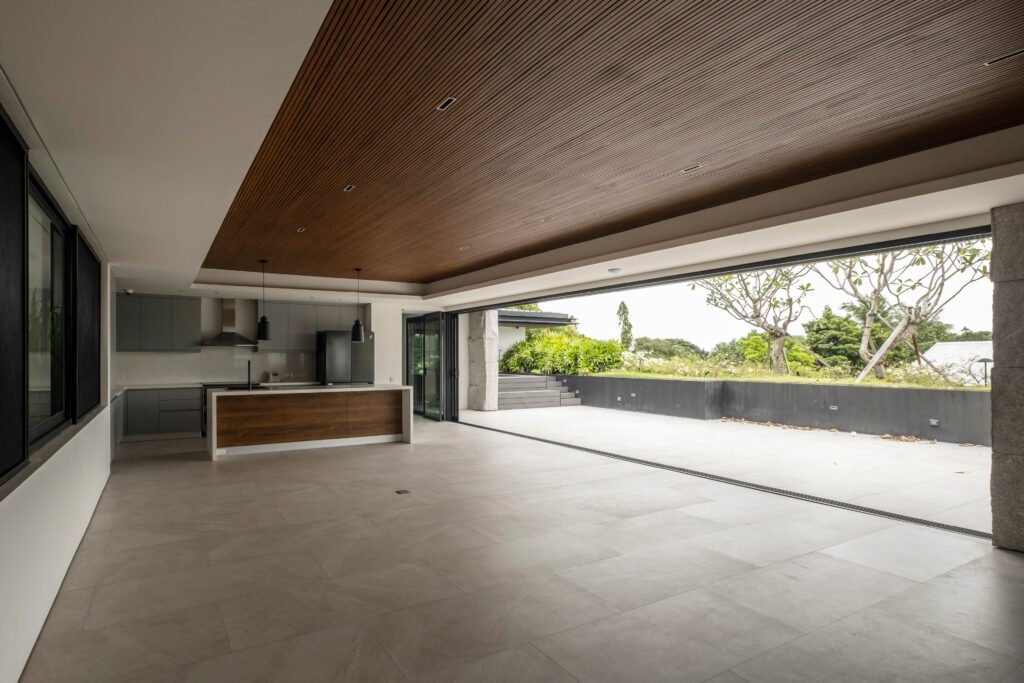
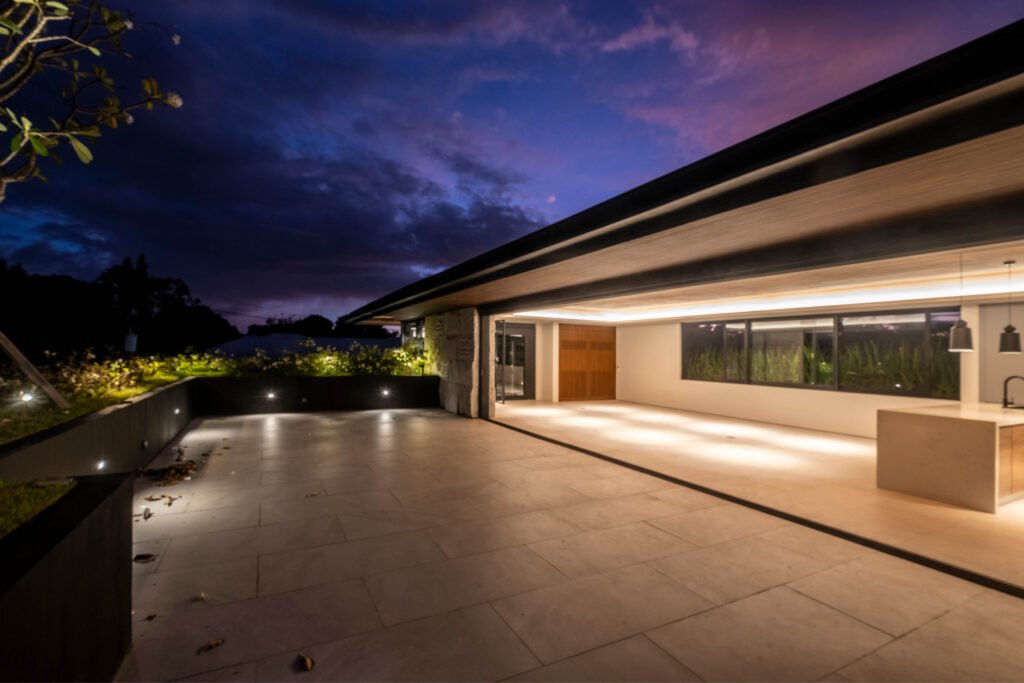
Nevertheless, Vista House didn’t have much push-and-pull between architect and developer, due to the design team’s proactive approach to the flexible space programming, the cross-ventilation of spaces, and the natural lighting that all built up to a home that any user can feel comfortable in. The sensibility of the design assures that it will be a home that any user can feel comfortable in.
“What I learned from Locsin was [how] every detail should be communicated and expressed to support the greater whole,” says Medina. “Looking at and treating it like a piece of art. Taking the sculptures of Daniel Dela Cruz or Cacnio as an example, they express every weld or every connection of the plate in support of what they’re trying to create. Houses should be the same. With so many people involved, you have to let it organically come into its own.” And come into its own the Vista House did, with more room to grow as it welcomes any family with open arms. •


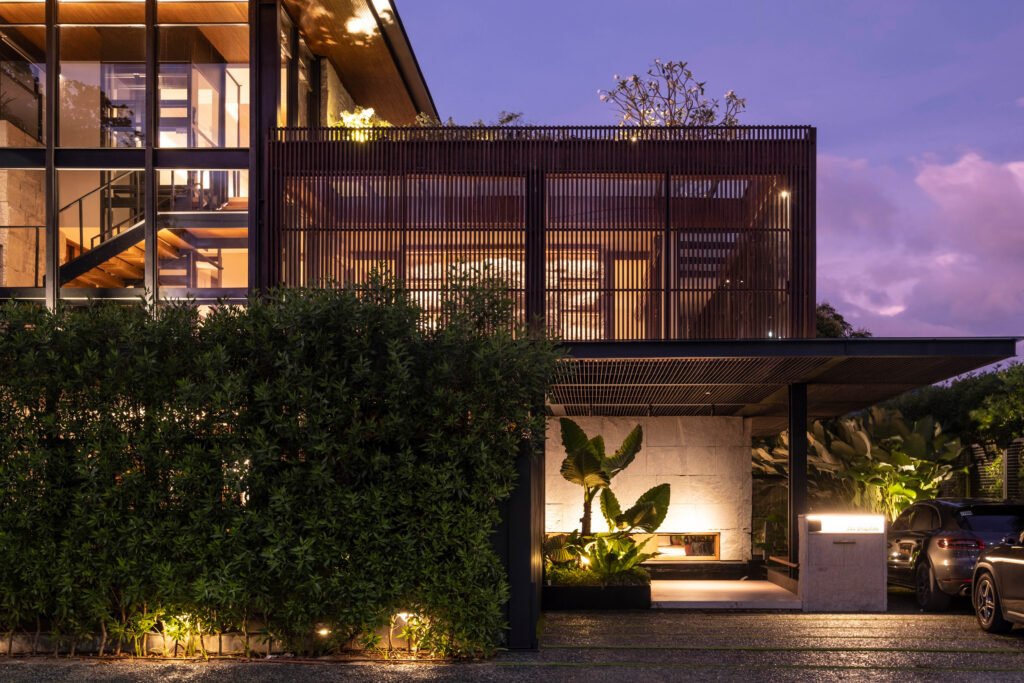

Project Team
Architect: Quito Medina of Open House Design Studio
Interior designer and project manager: IDR. Raissa Cruz
Furniture selection and styling: Raissa Cruz
Landscape design: Plontur, Cora’s Garden, Andie Gamboa and Inez Gamboa
Lighting Design: Andrew Li of Licht Lab
Contractors: Alvin Varron of Vason Construction Services

